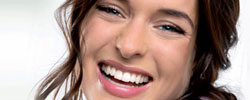Orthodontic Dentistry
Orthodontics is the branch of dentistry that specializes in the diagnosis, prevention and treatment of dental and facial irregularities. Orthodontists requires professional skill in the design, application and control of corrective appliances, such as braces and retainers, to bring teeth, lips and jaws into proper alignment and to achieve facial balance.
The results of orthodontic treatment can be dramatic — beautiful smiles, improved dental health and an enhanced quality of life for many people of all ages. Outstanding results are also dependent on maximizing the coordination of care between you and our practice.
Types of Orthodontic Treatments







Orthodontic Treatments
Normally abnormal bites become noticeable between the ages of 6 and 12, orthodontic treatment often begins between ages 8 and 14. Orthodontic treatment that begins while a child is growing helps produce optimal results as their face and jaw grows.
More and more adults are also seeking to have braces or orthodontic treatment and healthy teeth can be orthodontically treated at any age. According to the American Association of Orthodontists (AAO), one in five orthodontic patients is an adult. Read more on the difference between orthodontic treatment for chidlren and adults.


Signs for Early Orthodontic Examinations
- Early or late loss of baby teeth
- Difficulty in chewing or biting
- Mouth breathing
- Crowding, misplaced or blocked out teeth
- Jaws that shift or make sounds
- Biting the cheek or roof of the mouth
- Teeth that meet or bite abnormally or not at all
- Jaws and teeth that are out of proportion to the rest of the face
Healthy teeth can be moved at almost any age. Many orthodontic problems can be corrected for adults as children. Orthodontic forces move the teeth in the same way for both a 75-year-old adult and a 12-year-old child. However for adults, complicating factors such as lack of jaw growth, may create special treatment planning needs.
Benefits of Early Detection for Orthodontic Treatment
A check-up with an orthodontist no later than age 7 for children who enable the orthodontist to detect and evaluate problems (if any), advise if treatment will be necessary, and determine the best time for that patient to be treated. Patients who have clear indications for early orthodontic intervention, early treatment presents an opportunity to:
- Guide the growth of the jaw
- Regulate the width of the upper and lower dental arches
- Guide incoming permanent teeth into desirable positions
- Lower risk of trauma (accidents) to protruded upper incisors (front teeth)
- Correct harmful oral habits
- Reduce or eliminate abnormal swallowing or speech problems
- Improve personal appearance and self-esteem
- Potentially simplify and/or shorten treatment time for later corrective orthodontics
- Reduce likelihood of impacted permanent teeth
- Preserve or gain space for permanent teeth that are coming in
Orthodontic Treatment Conditions
Orthodontic treatment is used to treat different conditions:

Teeth may be aligned poorly because the dental arch is small and/or the teeth are large. The bone and gums over the roots of extremely crowded teeth may become thin and recede as a result of severe crowding. Impacted teeth, poor biting relationships and undesirable appearance may all result from crowding.

If teeth are missing or small, or the dental arch is very wide, space between the teeth can occur. The most common complaint from those with excessive space is poor appearance.

The most common type of a crossbite is when the upper teeth bite inside the lower teeth (toward the tongue). Crossbites of both back teeth and front teeth are commonly corrected early due to biting and chewing difficulties.

About 3 to 5 percent of the population has a lower jaw that is to some degree longer than the upper jaw known as an underbite or lower jaw protrusion. This can cause the lower front teeth to protrude ahead of the upper front teeth creating a crossbite. Careful monitoring of jaw growth and tooth development is indicated for these patients.

A deep overbite or deep bite occurs when the lower incisor (front) teeth bite too close or into the gum tissue behind the upper teeth. When the lower front teeth bite into the palate or gum tissue behind the upper front teeth, significant bone damage and discomfort can occur. A deep bite can also contribute to excessive wear of the incisor teeth.

An open bite results when the upper and lower incisor teeth do not touch when biting down. This open space between the upper and lower front teeth causes all the chewing pressure to be placed on the back teeth. This excessive biting pressure and rubbing together of the back teeth makes chewing less efficient and may contribute to significant tooth wear.





